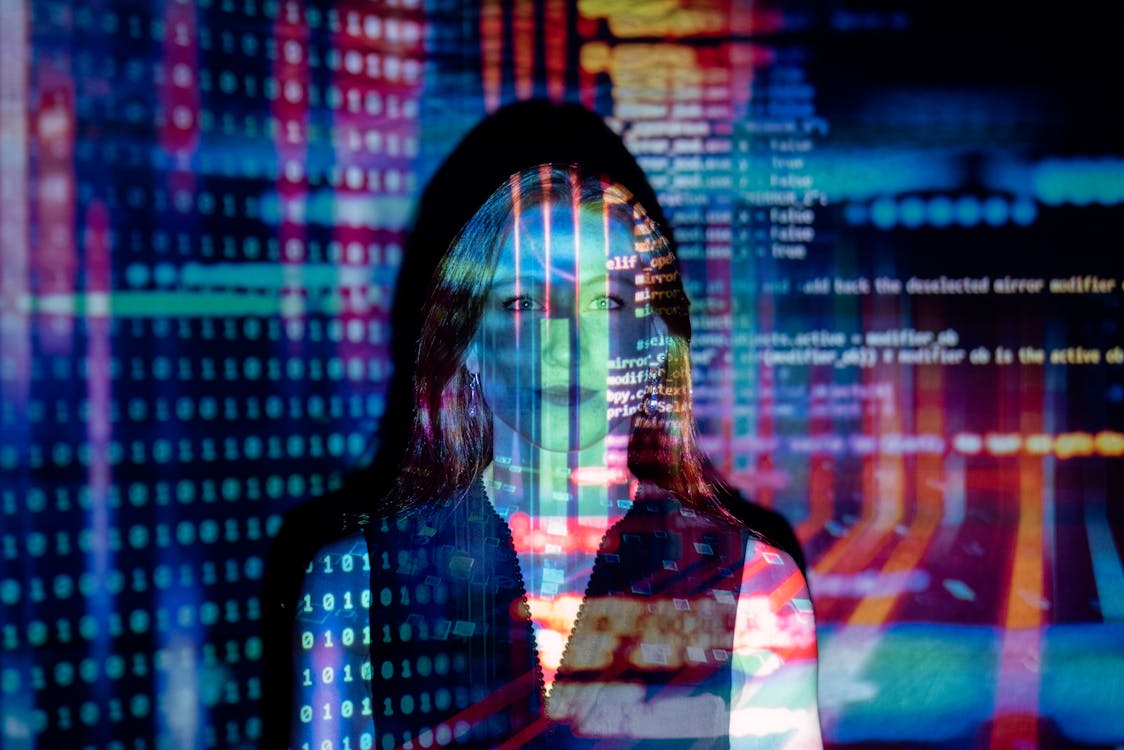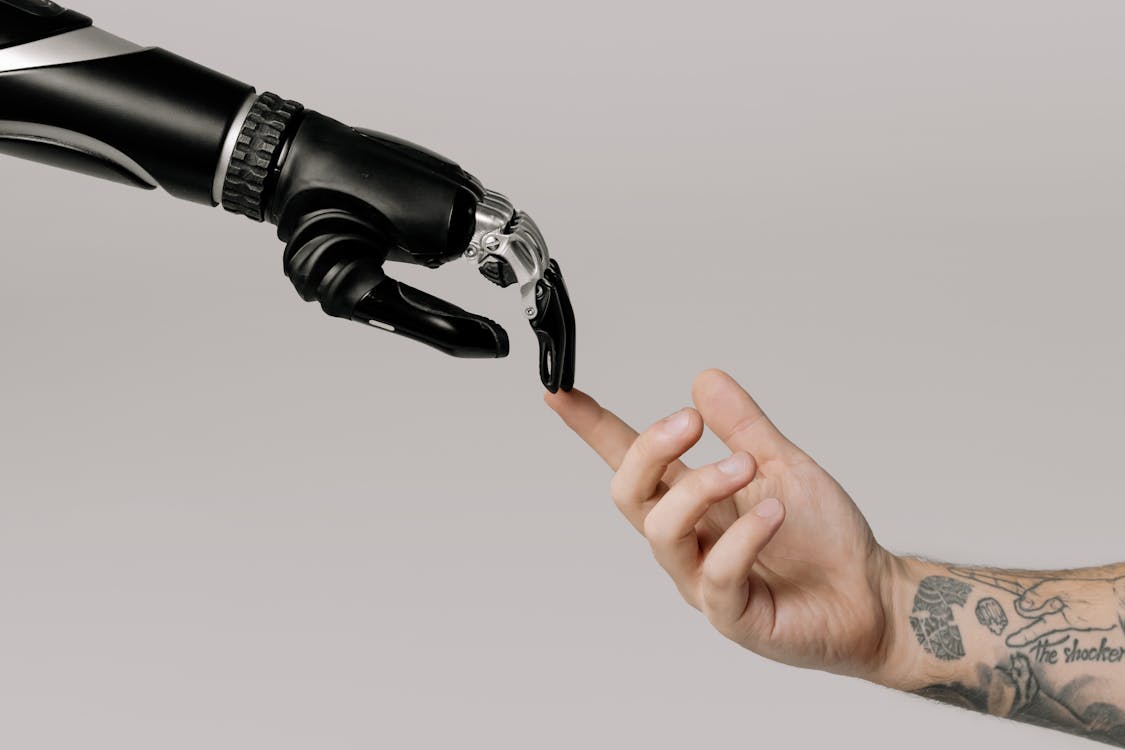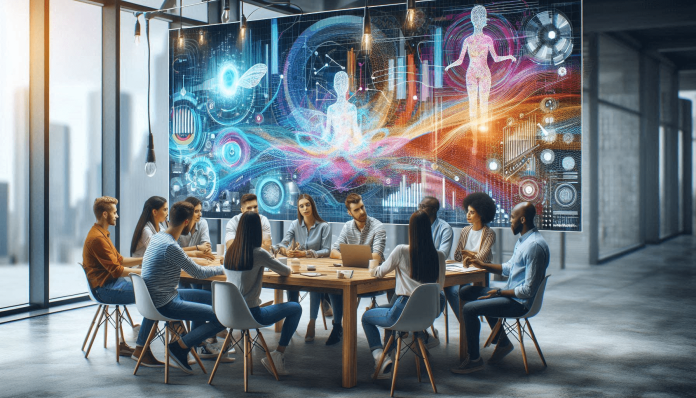Imagine a world where creativity knows no bounds, and the only limit is your imagination. Generative Artificial Intelligence (Generative AI) is transforming that vision into reality by blending human ingenuity with the unparalleled power of machines. In This article I will explores how generative AI is revolutionizing the creative landscape, empowering artists, designers, and creators to push boundaries and unlock new potentials.
What is Generative AI?
Generative AI refers to a class of AI models designed to create new content—ranging from text and images to music and videos and all graphics content . Unlike traditional AI, which analyzes data and generates insights, generative AI produces original material, allowing humans to explore innovative ideas that would have been otherwise unattainable.
The roots of generative AI stretch back to the development of algorithms capable of learning from existing data. Early models could only reproduce simple patterns, but advancements in machine learning and deep learning algorithms have significantly enhanced their abilities, leading to creations like OpenAI’s GPT-4 and DALL-E.
This AI-driven creativity is not limited to producing a single form of content. It encompasses multiple fields, including text generation, visual art, music, design, and even architecture. Generative AI is now a powerful collaborator in the human creative process, as opposed to a mere tool.

1. How Generative AI Works
Generative AI works through algorithms capable of learning from large datasets and generating new, unique outputs based on that information. Two major types of models power generative AI:
- Generative Adversarial Networks (GANs): These models pit two neural networks against each other—a generator and a discriminator. Content is created by the generator and then assessed by the discriminator. Over time, the generator improves to create highly realistic outputs.
- Transformer Models: These models, like OpenAI’s GPT series, are responsible for generating language-based content. They use vast amounts of text data to learn patterns and structures in language, enabling them to produce coherent and creative text.
These models are the backbone of most generative AI applications and allow for the creation of a variety of media types, from written text to complex visual designs.
2. Key Applications of Generative AI
The adaptability of generative AI is applicable to a wide range of businesses and use situations. Among the most noteworthy applications are the following:
Healthcare and Pharmaceuticals
- Drug Discovery: Generative AI can design new molecules for potential drugs, speeding up the discovery process
- Medical Imaging: AI models can generate high-quality images from low-resolution scans, aiding in better diagnosis.
Advertising and Marketing
- Content Creation: AI can generate personalized marketing content, including emails, social media posts, and advertisements
- Customer Insights: Generative AI can analyze customer data to create targeted marketing strategies.
Manufacturing
- Product Design: AI can generate new product designs based on specific requirements and constraints.
- Quality Control: Generative models can identify defects in products by analyzing images and sensor data.
Software Development
- Code Generation: AI can write code snippets or even entire programs based on user specifications
- Bug Fixing: Generative AI can identify and fix bugs in the code, improving software reliability.
Financial Services
- Fraud Detection: AI can generate models to detect fraudulent transactions by analyzing patterns in financial data.
- Risk Assessment: Generative models can simulate various financial scenarios to assess risks and make informed decisions.
Media and Entertainment
- Content Creation: AI can generate scripts, music, and even entire movies or video games.
- Personalized Recommendations: Generative AI can analyze user preferences to recommend movies, music, and other content.
Art and Design
- Image Generation: Tools like DALL-E can create unique images based on text descriptions.
- Fashion Design: AI can generate new clothing designs and patterns.
Customer Service
- Chatbots: AI-driven chatbots can respond quickly and accurately to consumer enquiries.
- Sentiment Analysis: Generative AI can analyze customer feedback to gauge sentiment and improve service.
Education
- Personalized Learning: AI can generate customized learning materials based on a student’s progress and needs.
- Content Summarization: Generative models can summarize textbooks and articles, making it easier for students to grasp key concepts.
Music and Audio
- Music Composition:AI is capable of writing creative music in a variety of genres.
- Voice Synthesis: Generative AI can create realistic human-like speech for audiobooks, virtual assistants, and more.
Generative AI is transforming many fields by enabling the creation of innovative and personalized content. If you have any specific applications in mind or want to explore a particular area further, feel free to ask!
3. The Role of Generative AI in Human Creativity
Generative AI enhances human creativity by acting as a collaborator. AI generates a multitude of ideas, drafts, or prototypes rapidly, offering creators numerous options to work with. This expands the range of possibilities and allows artists, writers, and designers to iterate more freely, reducing time spent on conceptualization and increasing innovation.
For instance, a writer experiencing a creative block can use AI to suggest different plot ideas, characters, or settings, sparking inspiration. Similarly, an architect can rely on AI to produce several iterations of a building design, refining it to meet specific requirements like sustainability and efficiency.
This partnership between humans and machines highlights AI’s role as a co-creator rather than just a tool for automation.
4. Enhancing Artistic Expression with AI
In the realm of visual arts, generative AI is opening new pathways for artistic expression. By analyzing vast datasets of artistic works, AI algorithms can generate unique compositions that would have taken human artists significantly longer to conceptualize.
For example, artists can collaborate with AI to produce intricate designs or patterns that balance randomness and structure. AI’s ability to introduce unexpected elements into an artwork enables creators to explore beyond traditional boundaries, finding beauty in unexpected places.
A prime example is AI-generated artwork being auctioned at major art galleries. These works raise questions about authorship and creativity, but they also illustrate the profound impact of AI on the artistic world.
5. Revolutionizing Design and Architecture
Generative AI is reshaping design and architecture by providing creators with new tools to explore innovative designs. AI can evaluate structural, environmental, and material constraints, allowing architects to create sustainable and functional designs that might not have been possible through traditional methods.
With AI, architects can input specific criteria—like material properties, load distribution, or aesthetic preferences—and let the algorithm generate multiple design iterations. This accelerates the design process and introduces a broader range of creative solutions, particularly for complex projects like skyscrapers or environmentally sensitive buildings.
By automating routine aspects of the design process, AI frees up time for designers to focus on refining their ideas, leading to more innovative and optimized outcomes.
6. AI in Writing and Storytelling
Artificial Intelligence (AI) is revolutionizing the field of writing and storytelling by providing writers with powerful tools to enhance their creativity and productivity. AI-driven platforms can assist in brainstorming ideas, overcoming writer’s block, and generating plot twists that keep readers engaged. These tools use natural language processing (NLP) to understand and mimic human language, allowing them to suggest character developments, settings, and even entire story arcs.
For instance, AI models like GPT-4 can generate coherent and contextually relevant text, making it easier for writers to draft and refine their stories. This collaboration between human creativity and machine efficiency is opening up new possibilities in the realm of storytelling.
Moreover, AI is not just limited to assisting writers but is also transforming the way stories are consumed. Interactive and adaptive narratives powered by AI can provide personalized reading experiences, tailoring the plot based on the reader’s preferences and choices. This level of customization enhances reader engagement and makes the storytelling experience more immersive.
Additionally, AI-generated content can be used in various media formats, including books, movies, and video games, expanding the reach and impact of creative works. As AI continues to evolve, it promises to bring even more innovative solutions to the world of writing and storytelling, pushing the boundaries of what is possible in literature and entertainment.

7. Music Composition with Generative AI
In music, AI can generate melodies, rhythms, and harmonies that either complement a musician’s style or introduce entirely new musical elements. Platforms like MuseNet allow musicians to experiment with soundscapes that break traditional boundaries, leading to the creation of fresh, original music.
This collaboration between musicians and AI allows for the exploration of new genres and innovative compositions, making AI an essential tool in modern music production.
8. Democratizing Creativity Through AI
One of the most significant impacts of generative AI is the democratization of creativity. Previously, creating high-quality art, music, or designs required extensive training and resources. However, with AI tools becoming increasingly accessible, anyone with a basic understanding of the technology can produce professional-level content.
This opens up creative fields to a wider audience, fostering diversity and innovation. Individuals from different backgrounds, who may not have formal training in art or design, can now contribute to the creative landscape using AI tools. This democratization ensures that more voices and perspectives are represented in the global creative community.
9. Overcoming Creative Blocks with AI
Generative AI offers a practical solution for overcoming creative blocks. When artists, writers, or designers hit a wall, AI can provide fresh ideas, sparking inspiration. The sheer volume of AI-generated concepts can lead to breakthroughs, helping creators develop new solutions and explore novel directions.
This ability to generate a vast range of ideas in seconds transforms brainstorming sessions, making it easier for creators to move past mental roadblocks and focus on refining their best ideas.
10. Generative AI in Innovation and Problem-Solving
11. The Ethical Implications of Generative AI
As with any technological advancement, generative AI raises ethical concerns. Issues surrounding originality, authorship, and copyright are particularly pressing, as AI-generated content may closely resemble existing works without proper attribution. Additionally, the potential for AI to replicate human biases within its creations is a critical challenge that developers must address.
These concerns highlight the need for careful oversight and refinement of AI models to ensure that they generate original, unbiased, and ethically sound content.
12. The Future of Human-AI Collaboration
The future of creativity lies in the collaboration between humans and AI. As AI technologies continue to evolve, they will become increasingly integral to creative processes across industries. Rather than replacing human creativity, AI will augment it, providing new perspectives, tools, and opportunities to push the boundaries of what’s possible.
The symbiotic relationship between human intuition and machine precision offers unprecedented potential for innovation and creativity.
13. The Impact of Generative AI on Lifelong Learning
Generative AI is not only transforming creative industries but also revolutionizing education. By personalizing learning experiences and offering real-time feedback, AI enhances the learning process for individuals at all stages of life.
AI-driven platforms can analyze learning patterns and preferences to tailor educational content, ensuring that learners engage with materials most relevant to their needs. This personalized approach fosters continuous learning, encouraging individuals to develop new skills and knowledge throughout their lives.
Conclusion
Generative AI is reshaping the creative landscape, transforming how humans approach art, design, music, and innovation. As this technology continues to evolve, it will play an increasingly collaborative role in the creative process, augmenting human ingenuity and unlocking new possibilities for expression and innovation.


